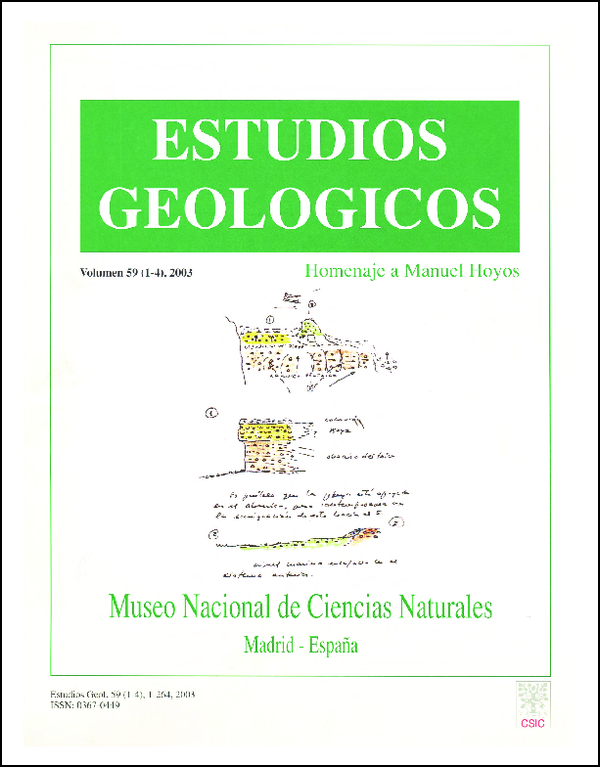Paleontologia y bioestratigrafia del mioceno continental de la Cuenca de Calatayud (Zaragoza): nuevos yacimientos de micromamiferos
DOI:
https://doi.org/10.3989/egeol.03591-4102Keywords:
Sites, micromammals, Basin of Calatayud, biostratigraphy, paleoclimatologyAbstract
In this work we study the micromammal associations of five new sites from the basin of Calatayud: Vilueña, Torralba de Ribota 8, Montón, Armantes 14 and Belmonte. In the first four sites we have recognised the evolved species lineage of Megacricetodon primitivus-collongensis-crusafonti of the Middle Miocene that have allowed us to place them biostratigraphically with accuracy. The oldest site is Vilueña, with Megacricetodon primitivus which is a characteristic species of the C y D1 zones corresponding respectively to the Lower and Middle Aragonian. The association of Megacriceton primitivus- collongensis and Fahlbuschia koenigswaldi in Torralba de Ribota 8 is characteristic of the D zone of the Middle Aragonian. In Montón we found the transitional taxon of Megacricetodon collongensis-crusafonti which is characteristic of the F and Gl zones of the Upper Aragonian. In Armantes 14 there is the species Megacricetodon crusafonti that is characteristic of the G2 zone of the Upper Aragonian. Finally in the Belmonte site, the presence of the muridae Progonomys hispanicus, indicates its age of the Upper Vallesian, in the zone J that is characterized by that species. From a paleoenvironmental and paleoclimatic point of view, the presence in the sites of Vilueña, Torralba de Ribota 8 and Montón of the terrestrial squirrel of the genus Heteroxerus, and some gliridae of the genus Microdyromys which are not related with a wet climate, and the capacity of this last genus and also of the cricetid genus Fahlbuschia to endure high temperatures, suggest an open country environment and a climate relatively dry and warm during the most part of the Lower and Middle Aragonian and the lower part of the Upper Aragonian as was pointed out in other areas (Daams et al., 1988; Daams & van der Meulen, 1984; van der Meulen & Daams, 1992). In the Upper Aragonian faunal association of Armantes 14, it appears a gliridae of the genus Muscardinus that is considered characteristic of a humid climate, and there are no terrestrial squirrels. This is in agreement with the suggestion made by Daams et al. (op.cit.) that this age was relatively wetter than the former one. There is a fauna1 micromammal change between the Middle and the Upper Miocene, evident in the fauna1 association of the Upper Vallesian site of Belmonte in which there are no anyone of the cricetidae that were characteristic of the Middle Miocene but it appears the first muridae represented by the genus Progonomys. This has been interpreted as a climatic change towards relatively drier conditions, that went on during al1 the Upper Miocene, and also relatively colder, according to Daams et al. (op. cit.).
Downloads
Downloads
Published
How to Cite
Issue
Section
License
Copyright (c) 2003 Consejo Superior de Investigaciones Científicas (CSIC)

This work is licensed under a Creative Commons Attribution 4.0 International License.
© CSIC. Manuscripts published in both the print and online versions of this journal are the property of the Consejo Superior de Investigaciones Científicas, and quoting this source is a requirement for any partial or full reproduction.
All contents of this electronic edition, except where otherwise noted, are distributed under a Creative Commons Attribution 4.0 International (CC BY 4.0) licence. You may read the basic information and the legal text of the licence. The indication of the CC BY 4.0 licence must be expressly stated in this way when necessary.
Self-archiving in repositories, personal webpages or similar, of any version other than the final version of the work produced by the publisher, is not allowed.















